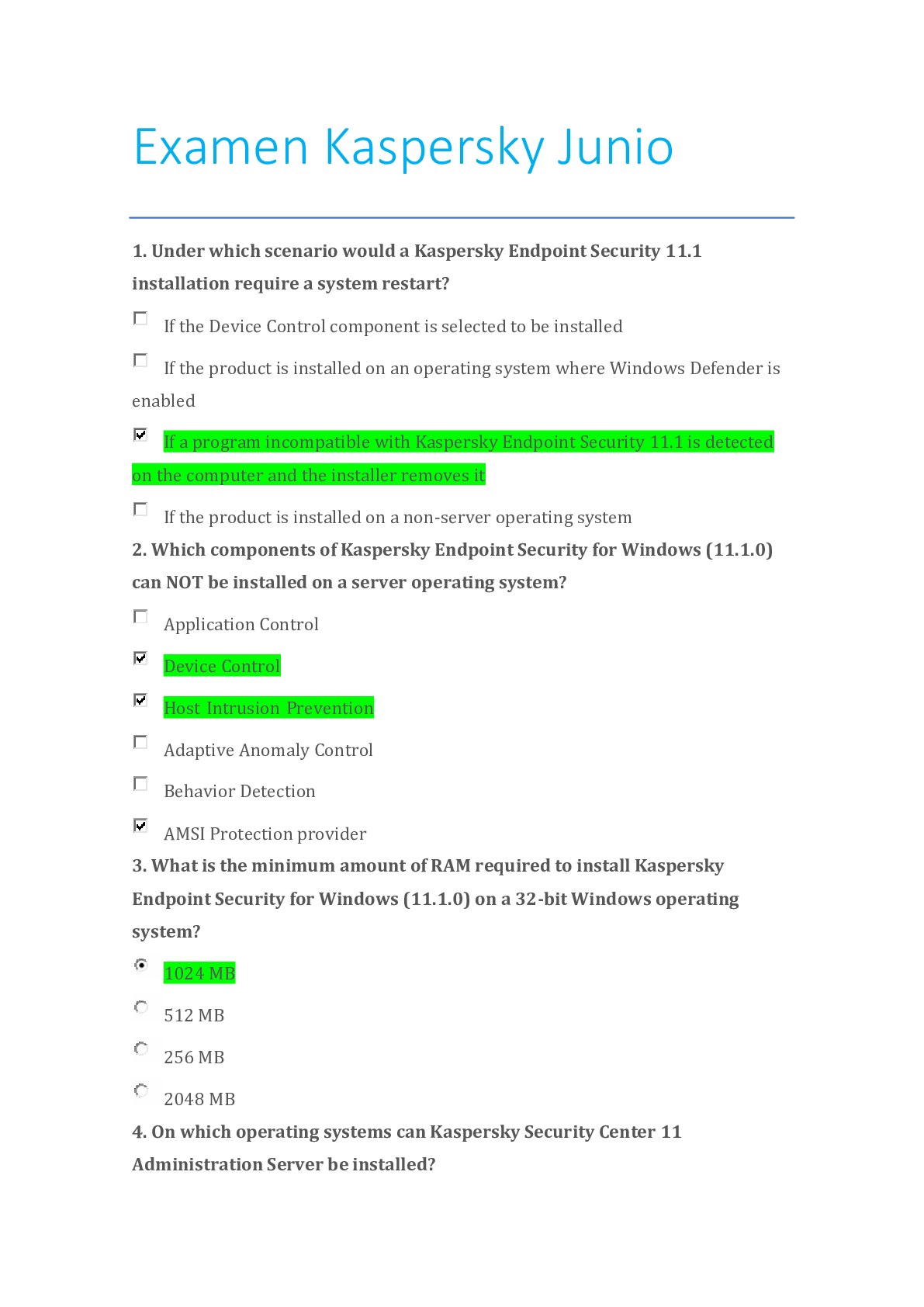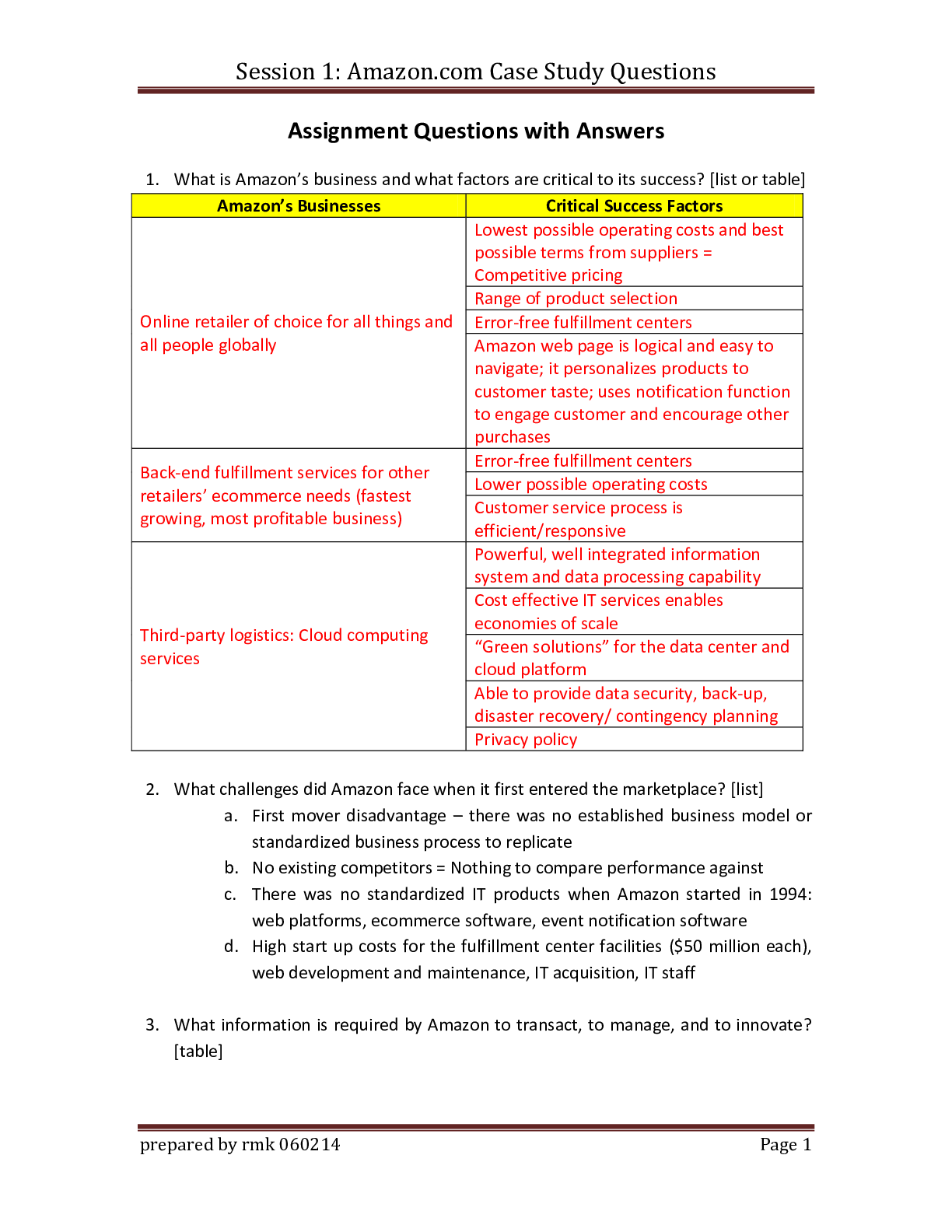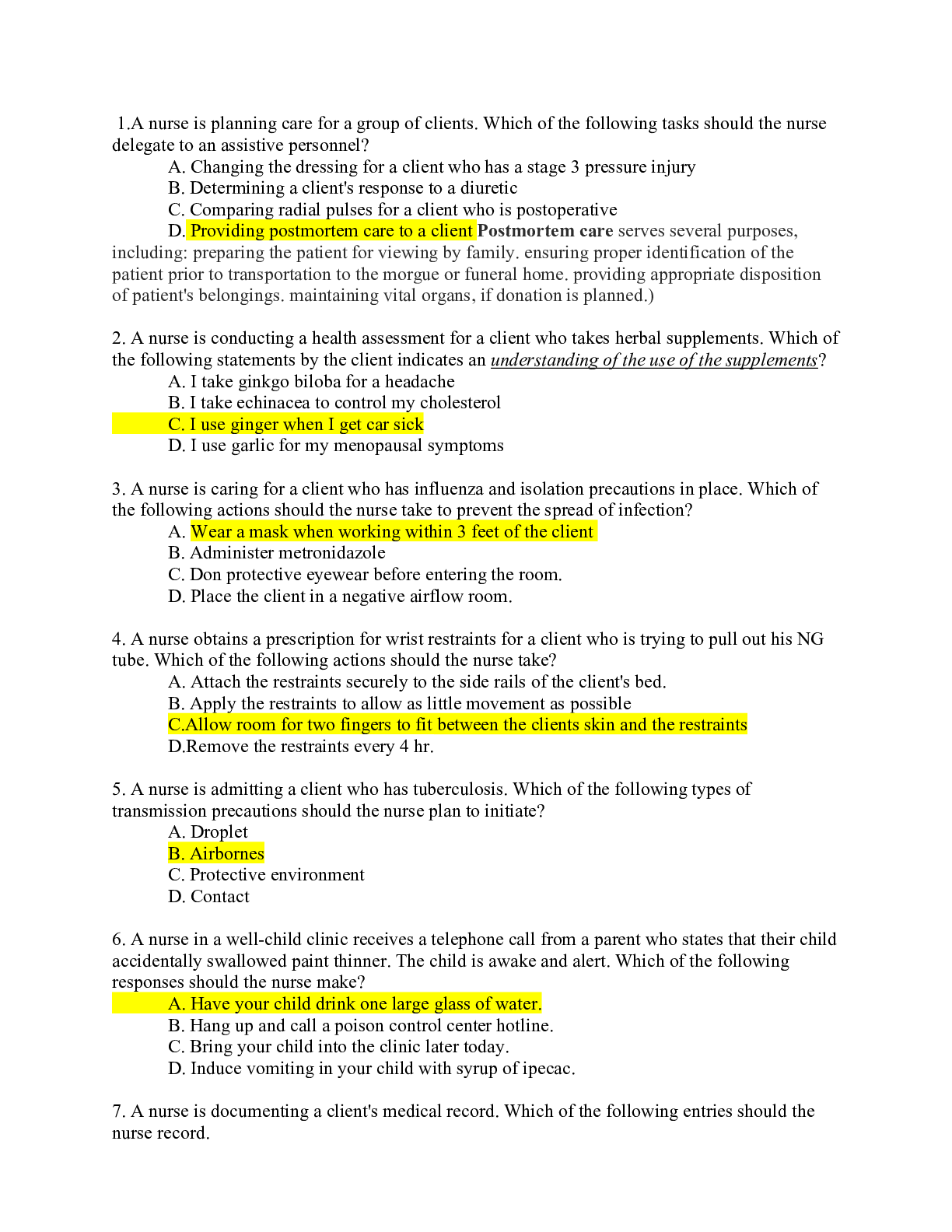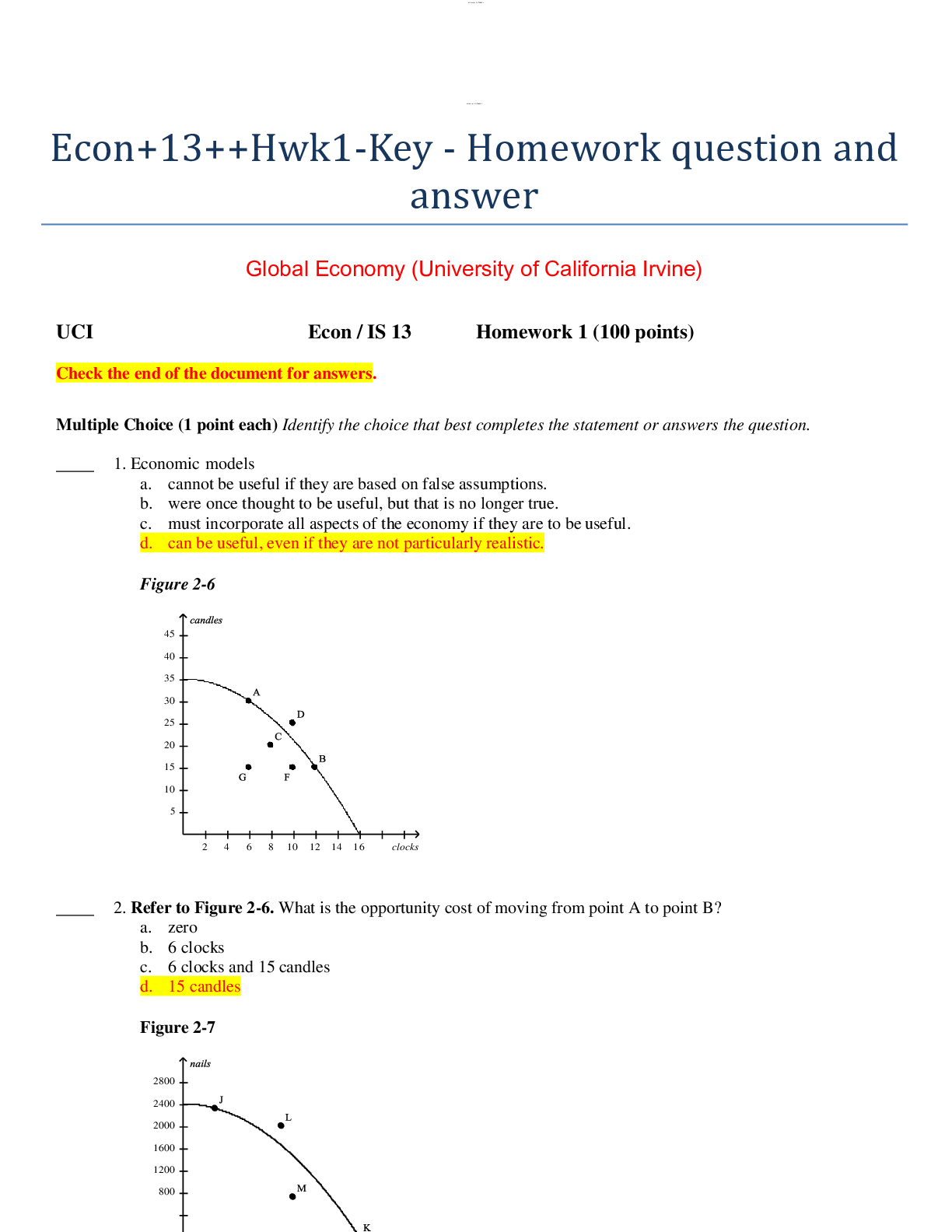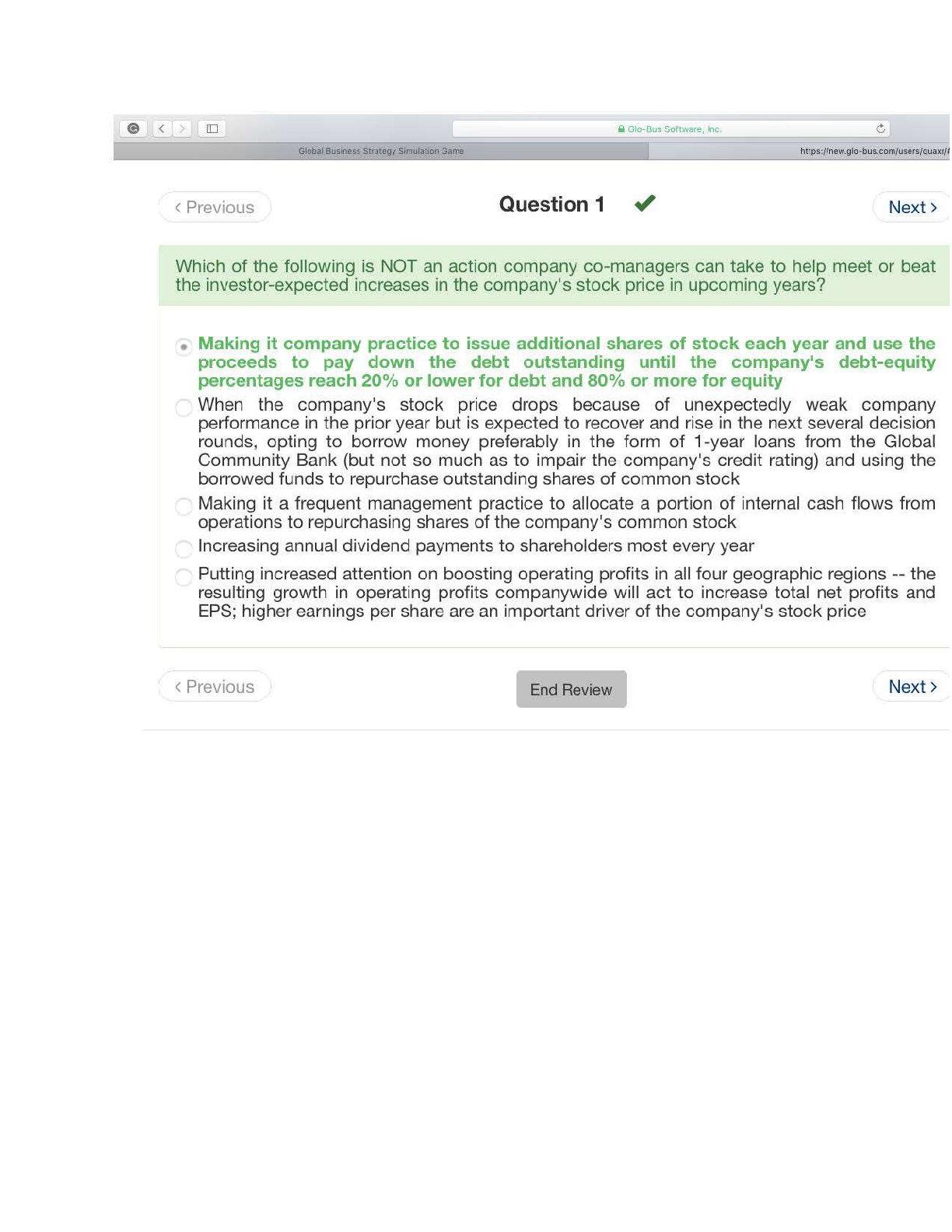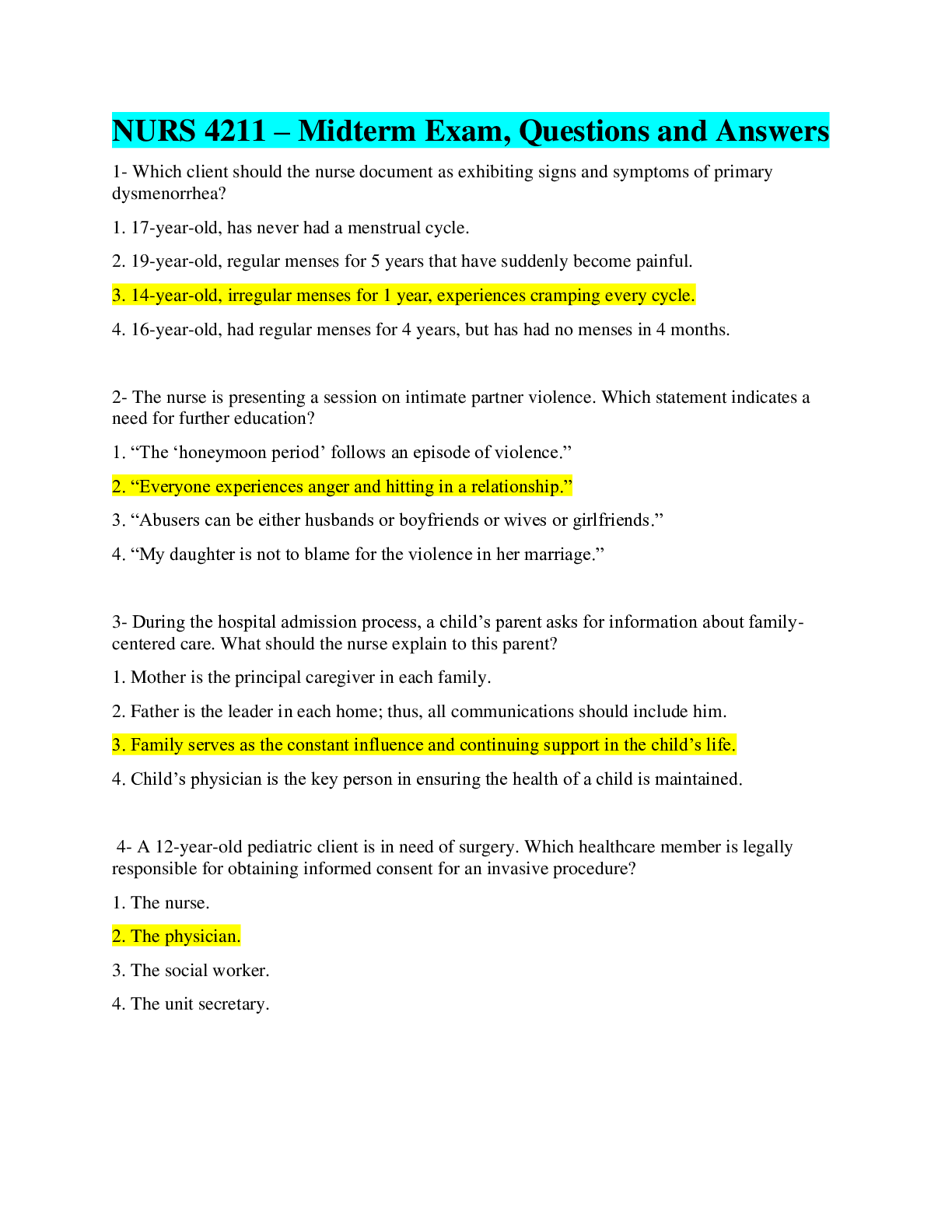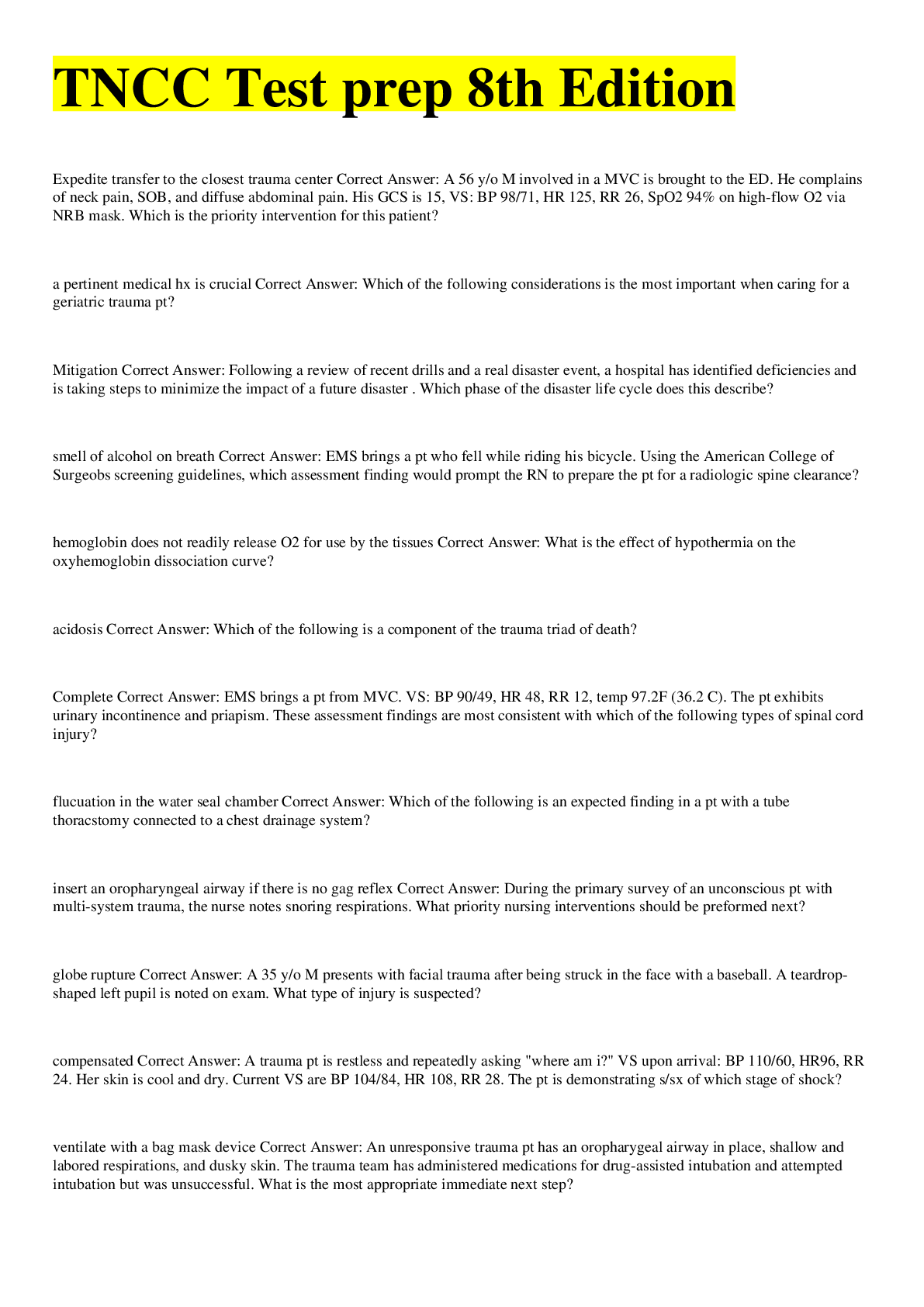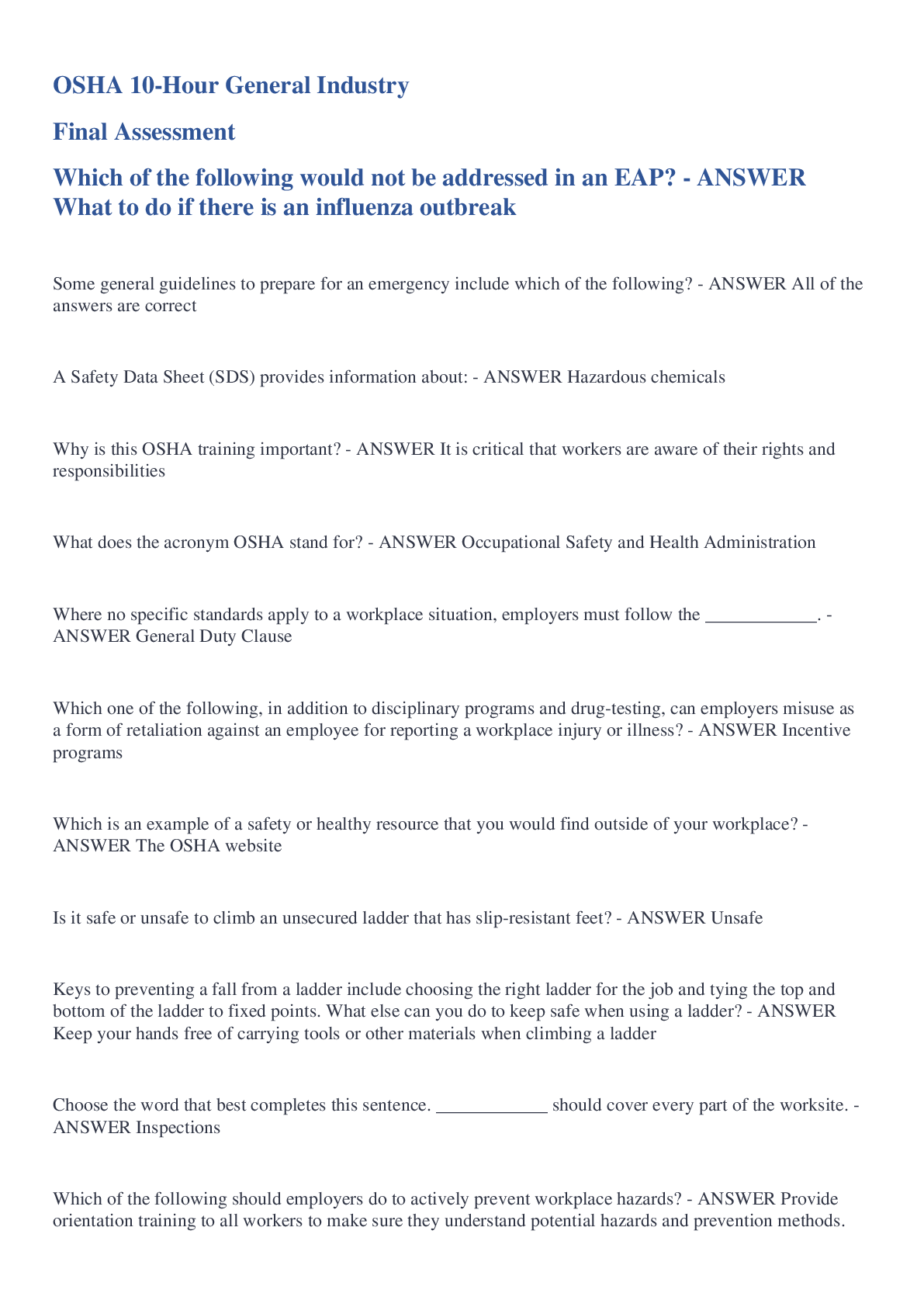*NURSING > QUESTIONS & ANSWERS > Florida National University NURSING 3165 DMC Exit. Comprehensive Questions and Answers. Your Grade A (All)
Florida National University NURSING 3165 DMC Exit. Comprehensive Questions and Answers. Your Grade A+. Download.
Document Content and Description Below
Comprehensive Exit Exam Multiple Choice Identify the choice that best completes the statement or answers the question. 1. The child with seizure disorder is being treated with phenytoin (Dil... antin). Which of the following statements by the patient's mother indicates to the nurse that the patient is experiencing a common side effect of Dilantin therapy? a. "She is very irritable lately." b. "I have trouble getting her to sleep." c. "Her gums look too big for her teeth." d. "She has gained about 10 pounds in the last six months." ANS: C 2. The prescriber orders tranylcypromine sulfate (Parnate)10 mg twice a day for a client with major depression. The nurse should teach the client to refrain from eating foods containing tyramine because it may cause: a. Melanoma. b. Hyperthermia. c. Hypertension. d. Urinary retention. ANS: C 3. The prescriber orders captopril (Capoten) 25mg by mouth three times daily for a client with hypertension. Which of the following adverse reactions can occur with administration of Capoten? a. Tinnitus. b. Persistent cough. c. Muscle weakness. d. Diarrhea. ANS: B 4. A client who has been taking phenazopyridine (Pyridium) for symptoms of urethritis and cystitis comes to the clinic because her urine is reddish-orange. Which question should the practical nurse ask to determine if the medication has been effective? a. How much water have you been drinking each day? b. Does the urine color stain your toilet bowl or undergarments? c. Have you had any relief from urinary pain, burning, or urgency? d. Did your urine appear cloudy or have a foul odor on voiding? ANS: C 5. The nurse is visiting a home health client with osteoporosis. The client has a new prescription for alendronate (Fosamax). Which instruction should be given to the client? ANS: C a. Avoid rapid movements after taking the medication. b. Rest in bed after taking the medication for at least 30 minutes. c. Take the medication with water only. d. Allow at least 1 hour between taking the medicine and taking other. 6. A client receives a prescription for an oral opioid analgesic for post-operative pain. Which adverse effect should the nurse monitor for with the client? a. Photosensitivity b. Constipation. c. Decreased heart rate. d. Frequent urination. ANS: B 7. A postoperative client receiving a transfusion of packed red blood cells develops chills, fever, headache, and anxiety 35 minutes after the transfusion is started. After stopping the transfusion, what action should the nurse take? a. Draw blood for a new crossmatch. b. Send a urine specimen to the laboratory. c. Administer PRN acetaminophen (Tylenol). d. Give the PRN diphenhydramine (Benadryl). ANS: C 8. After abdominal surgery, a client with protein calorie malnutrition is receiving total parenteral nutrition (TPN). Which is the best indicator that the client is receiving adequate nutrition? a. Serum albumin level is 3.5 mg/dL. b. Fluid intake and output are balanced. c. Surgical incision is healing normally. d. Blood glucose is less than 110 mg/dL. ANS: C 9. A client who is having a tunneled central venous catheter inserted begins to report chest pain and difficulty breathing. What action does the nurse take first? a. Administer the PRN pain medication. b. Prepare to assist with chest tube insertion. c. Place a sterile dressing over the IV site. d. Place the client in the Trendelenburg position. ANS: B 10. A nurse is changing the administration set on a client’s central venous catheter. Which intervention is most important for the nurse to complete? a. Have the client hold his breath during the set change. b. Keep the slide clamp on the catheter extension open. c. Position the client in a high Fowler’s position. d. Position in the client in a semi-Fowler’s position. ANS: A 11. When an IV pump alarms because of pressure, what action does the nurse take first? a. Check for kinking of the catheter. b. Flush the catheter with a thrombolytic enzyme. c. Get a new infusion pump. d. Remove the IV catheter. ANS: A 12. The nurse is working in the pediatric unit and receives a phone order from the doctor for a 10-year-old client who weighs 40 kg. The order is for ceftazidime (Fortaz) 1.5 gm every 8 hours IV. The therapeutic dosage range is 90-150 mg/kg/24 hr. What would be the best nursing action? a. Administer the medication because it is within the therapeutic dosage range. b. Call the doctor to clarify the order because it is outside the therapeutic dosage range. c. Call the hospital pharmacist and ask him or her to calculate the dosage. d. Notify the nursing supervisor and request assistance. ANS: A 13. The prescriber orders an IV piggyback of Cefotan 1 gm in 100 mL D5W to run over 30 minutes. The drop factor for the tubing is 10 gtt/mL. At what rate in drops per minute would the nurse run the IV? a. 12. b. 25. c. 33. d. 50. ANS: C [Show More]
Last updated: 1 year ago
Preview 1 out of 86 pages

Reviews( 0 )
Document information
Connected school, study & course
About the document
Uploaded On
Apr 10, 2021
Number of pages
86
Written in
Additional information
This document has been written for:
Uploaded
Apr 10, 2021
Downloads
0
Views
27

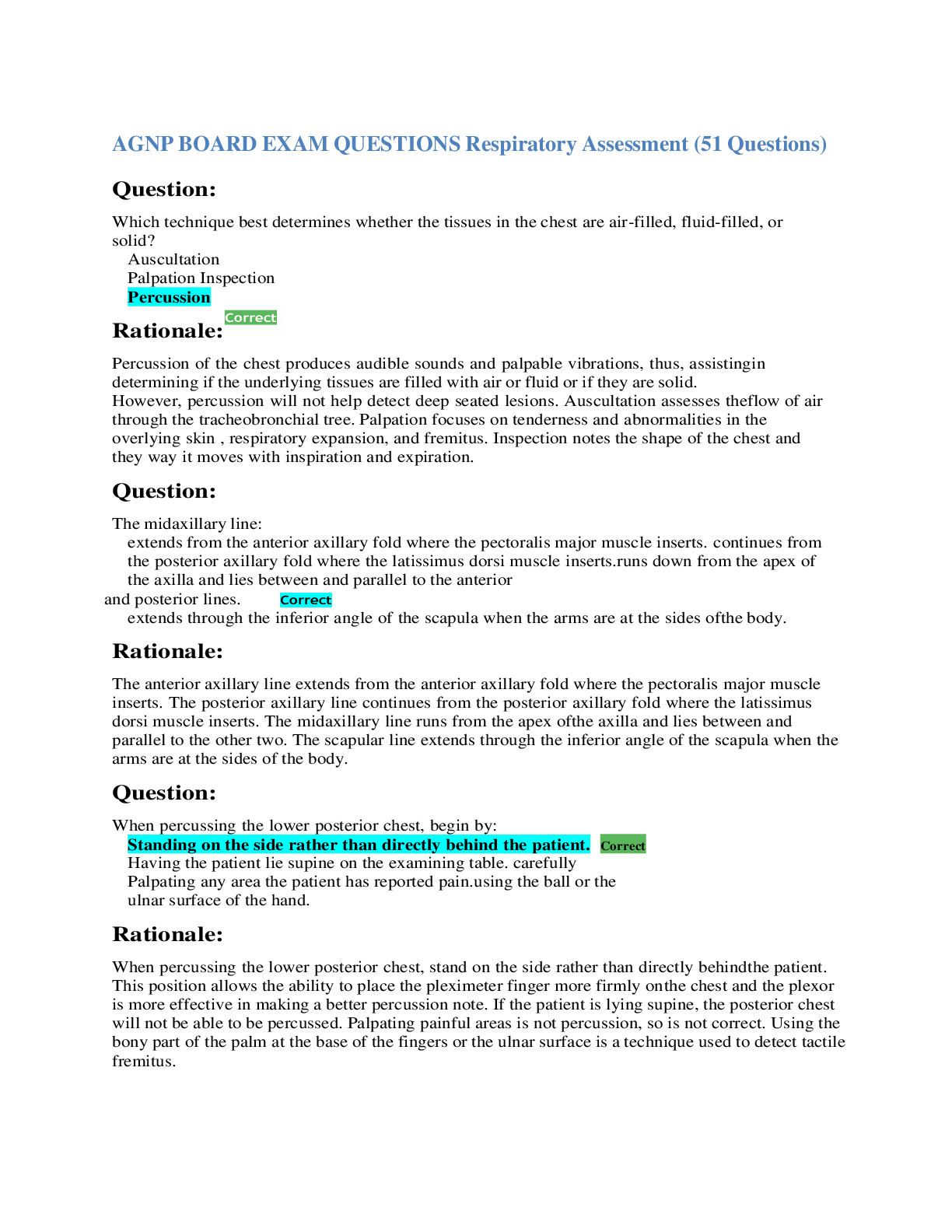

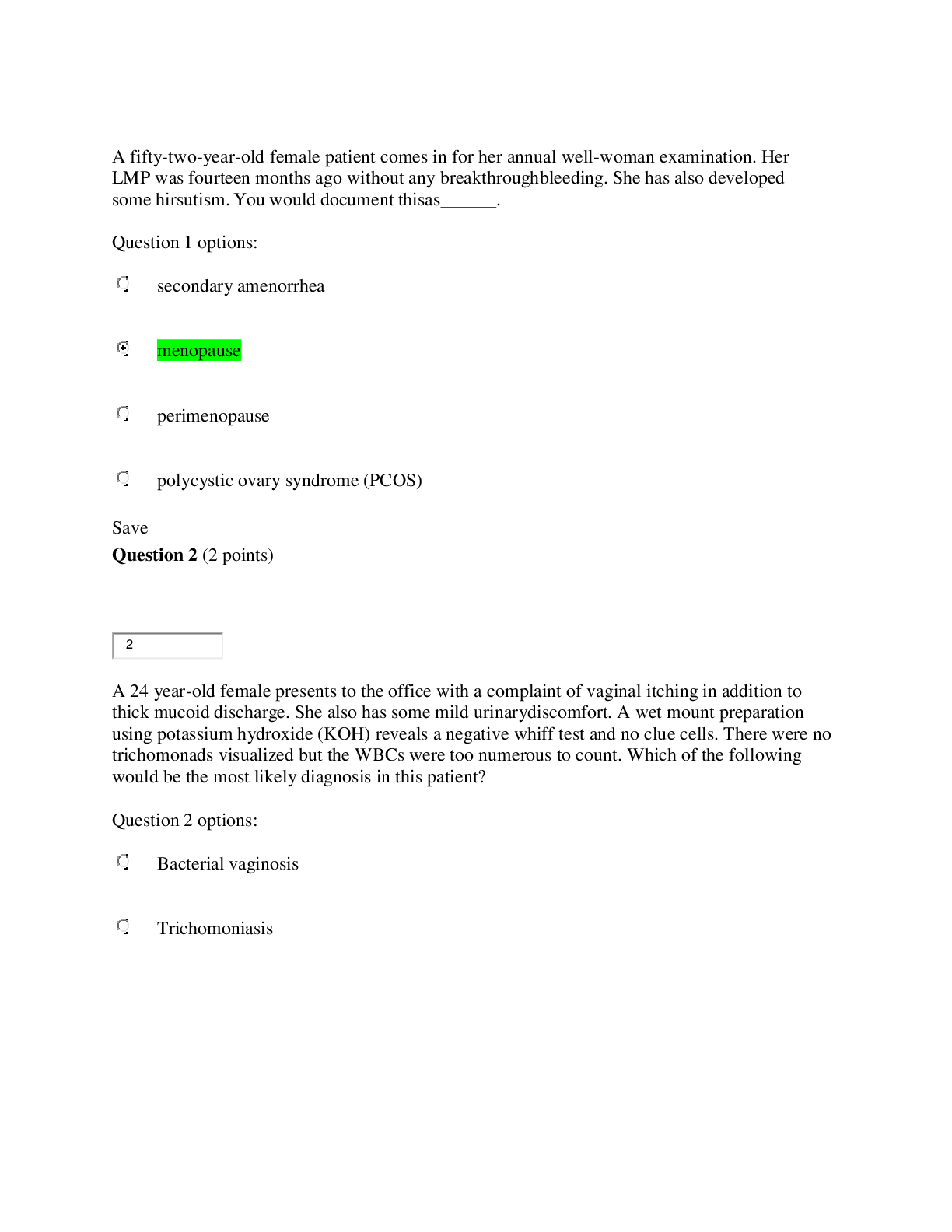


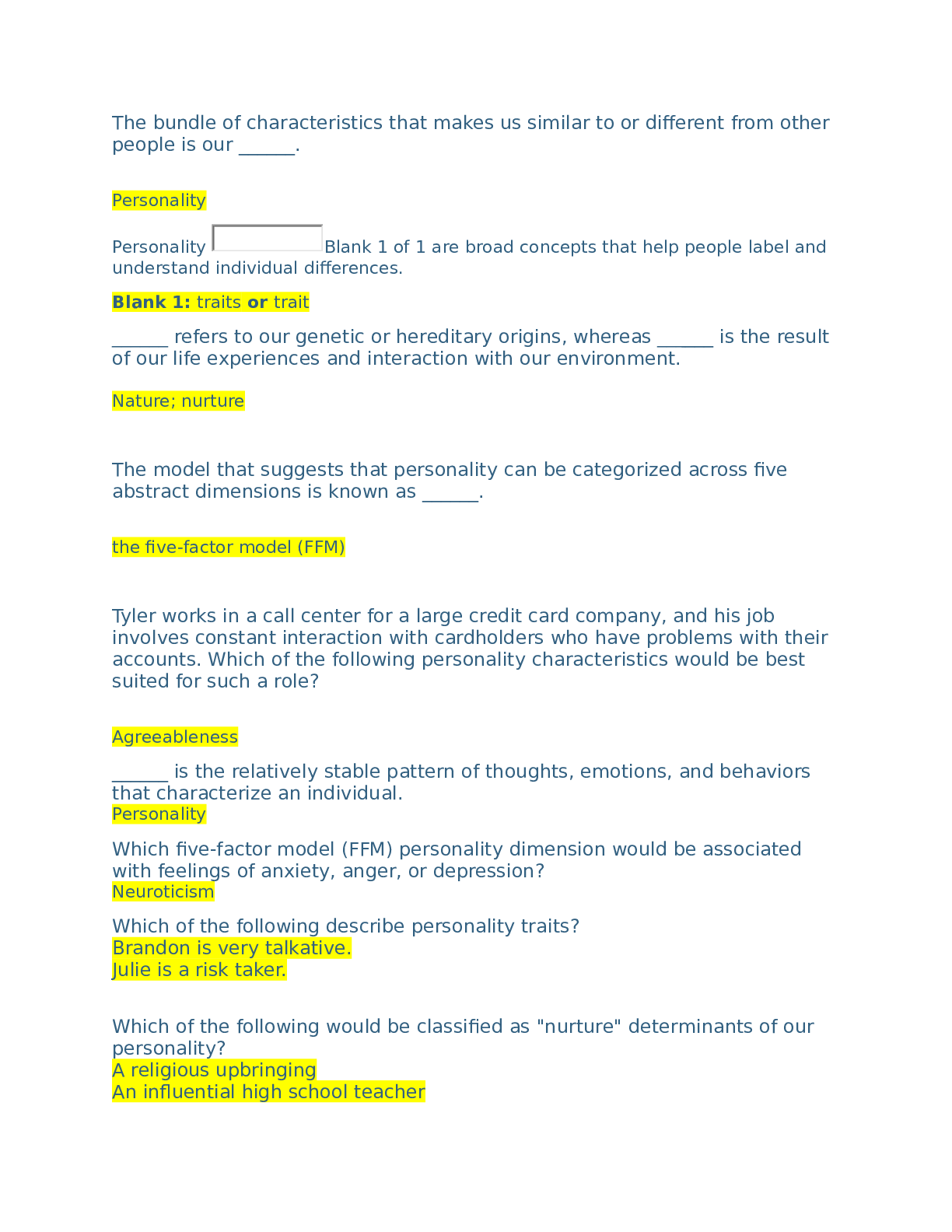
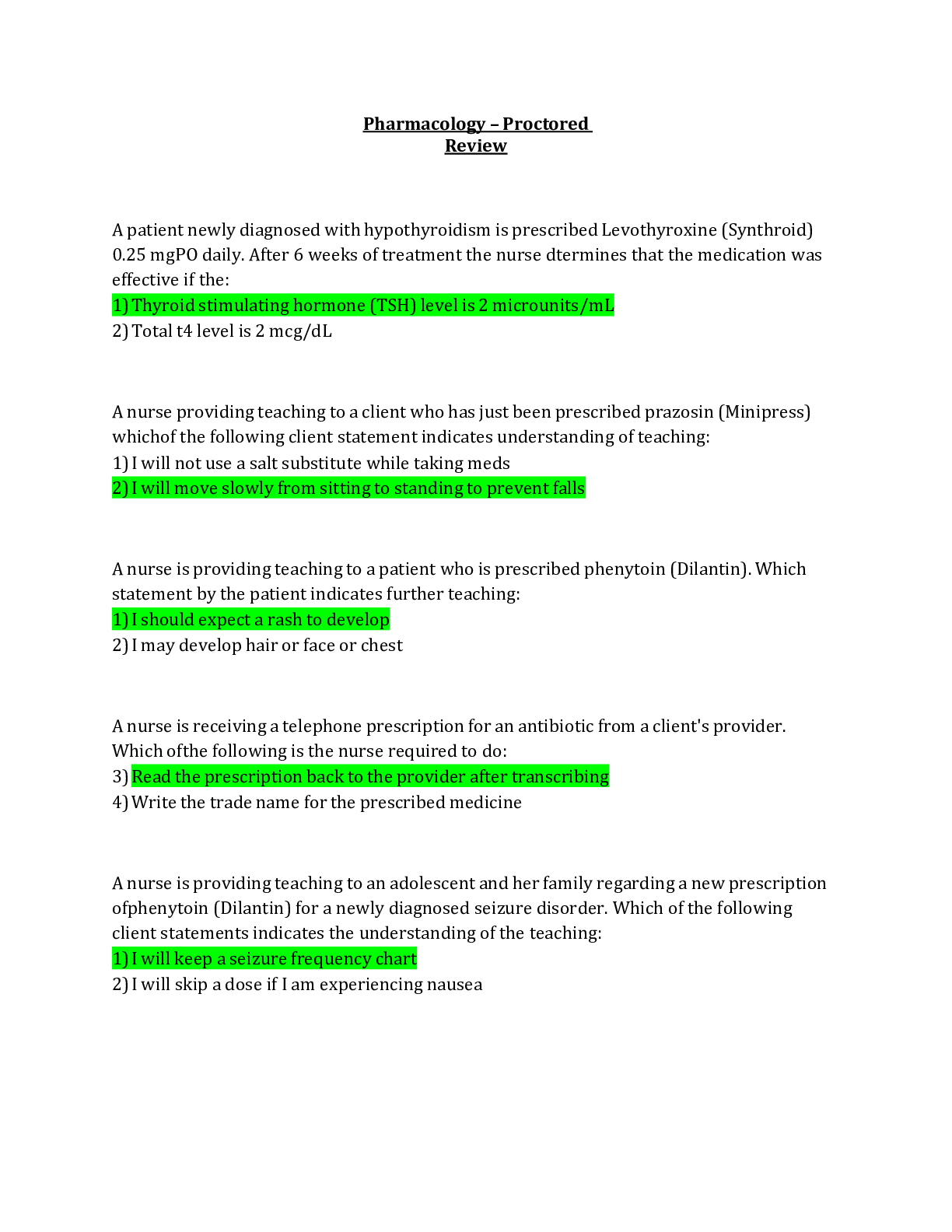



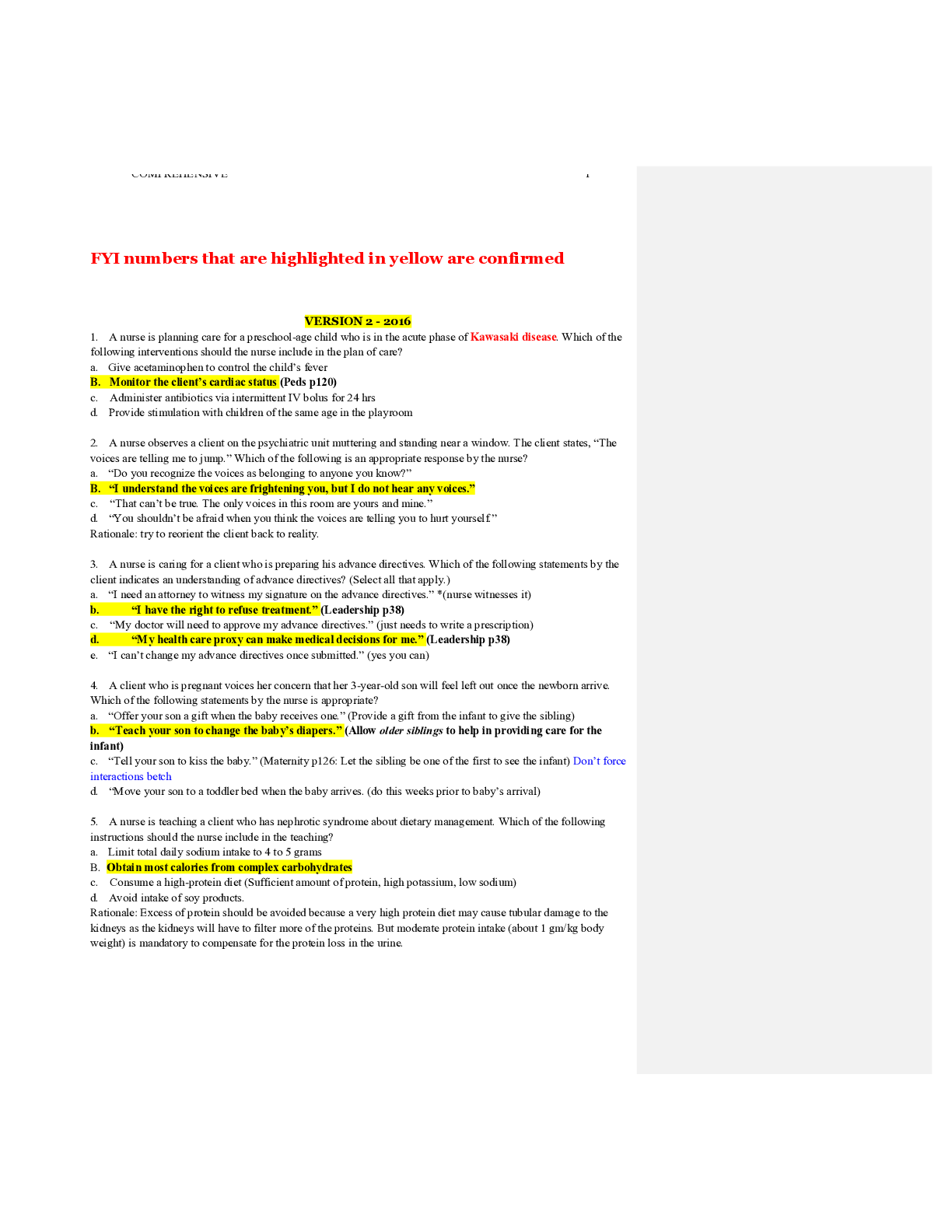
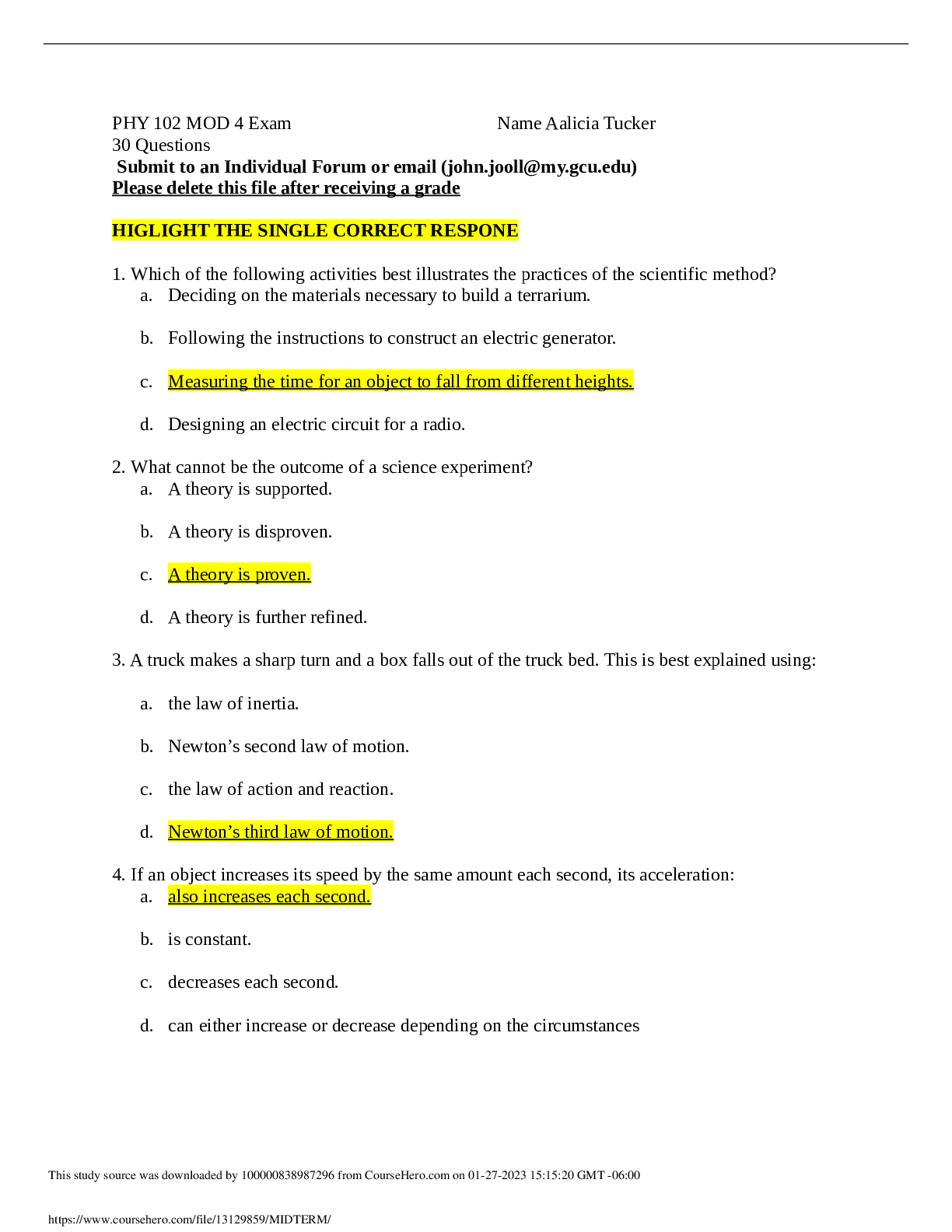





.png)

.png)



